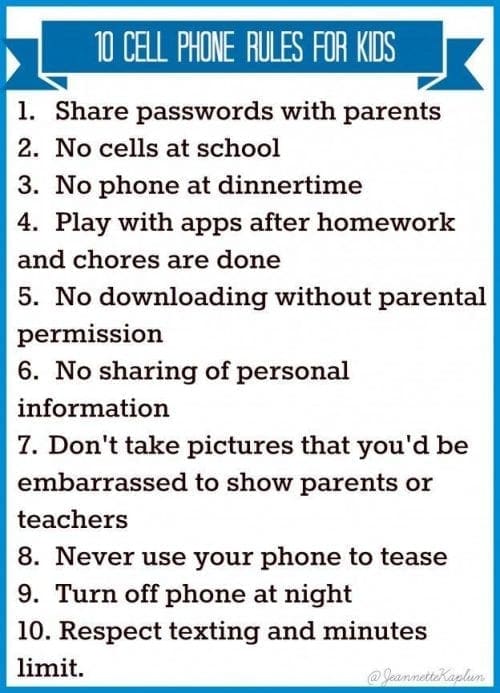Are you tired of the daily battle over screen time with your kids? You’re not alone.
Finding the right balance between technology and other activities can feel like a constant struggle. But imagine a world where setting screen time limits doesn’t lead to tantrums or tears. Picture your kids willingly putting down their devices, eager to engage in other activities.
Sounds too good to be true, right? It’s not. With the right approach, you can establish screen time rules that your kids won’t hate. You’ll discover practical strategies to create a harmonious balance that respects your kids’ love for technology while encouraging healthier habits. Let’s dive in and transform how screen time is managed in your home.
Understanding Screen Time Benefits
Balancing screen time for kids can be challenging. Set limits that feel fair and include activities kids enjoy. Engage them in the process to create a routine that suits everyone.
Understanding how screen time can be beneficial is crucial in setting limits that children will appreciate rather than resist. You might be surprised to learn that screen time isn’t just about entertainment. It can also be a powerful tool for education and creativity.Balancing Entertainment And Education
Screen time can be a delightful mix of fun and learning. Imagine your child laughing at a cartoon while unknowingly picking up new vocabulary words. Educational apps and programs can turn your child’s screen into a classroom, offering lessons in math, science, or languages in an engaging way. Finding the right balance is key. You want your child to enjoy their favorite games and shows, but also to explore educational content. Consider setting time slots for each type of screen activity, allowing your child to enjoy both learning and leisure.Encouraging Creativity And Learning
Screens can be windows to new worlds where creativity thrives. Have you noticed how some kids can spend hours building entire cities on Minecraft? This isn’t just play—it’s an exercise in creativity, problem-solving, and sometimes even teamwork. You can encourage this by introducing your kids to apps that let them create art, music, or even their own video games. This not only keeps them entertained but also nurtures their creative skills. What if the next time your child picks up a device, they’re inspired to create rather than just consume? Understanding these benefits can help you set limits that are seen not as restrictions, but as opportunities for growth and fun. Engage with your child about these benefits, and you may find them more receptive to the idea of balanced screen time. What are some of the creative ways you’ve seen kids use screens for learning?
Credit: anothermotherrunner.com
Common Screen Time Challenges
Screen time is part of everyday life for kids. Managing it can be tough. Parents face challenges keeping it balanced. Overuse leads to issues. Conflicts arise over limits. Let’s explore these common screen time challenges.
Recognizing Overuse Signs
Kids often get absorbed by screens. They lose track of time easily. Watch for signs of overuse. Are they skipping meals or homework? Do they seem tired or moody? Is social interaction declining? These can signal excessive screen time.
Physical symptoms can also occur. Headaches and eye strain might appear. Sleep problems can develop. Recognizing these signs helps set effective limits. Awareness aids in maintaining balance.
Managing Screen Time Conflicts
Conflicts over screen time are common in homes. Kids want more time. Parents want less. Finding a middle ground is key. Open conversations help resolve disagreements. Encourage kids to express their views.
Set clear rules and expectations together. Make a schedule that suits everyone. Use incentives for cooperation. Consider time as a reward for chores done. Involve kids in decision-making. This eases tension and builds understanding.
Creating A Screen Time Plan
Creating a screen time plan can help balance digital activities. It sets clear boundaries that kids will accept. A well-thought-out plan ensures kids enjoy their screen time responsibly. Parents can guide their children to form healthy habits. This plan needs to be flexible and realistic.
Setting Realistic Goals
Start with setting clear, achievable goals. Understand your child’s daily routine first. Consider schoolwork, playtime, and family activities. Then, allocate screen time that complements these activities. Avoid setting strict rules that feel like punishment. Instead, choose limits that are easy to follow. Remember, the key is balance.
Involving Kids In Planning
Involve your children in creating the screen time plan. Ask them how much time they feel is right. Discuss the importance of balancing screen time with other activities. Encourage them to suggest times for screens and no screens. This makes them feel included and responsible. Involving kids leads to better cooperation.

Credit: useboomerang.com
Implementing Flexible Rules
Creating flexible screen time rules can help kids feel more involved. Discuss limits openly with them. Encourage breaks and alternative activities.
Implementing flexible rules can make screen time limits more acceptable to kids. Kids often resist strict rules, but flexibility can ease tensions. This approach involves adapting rules to suit each child’s needs. It respects individual differences and fosters cooperation. Parents can create a more harmonious home environment by doing so.Adapting To Different Ages
Children of different ages have different needs. What works for a teenager might not suit a younger child. Younger kids benefit from shorter screen sessions. They need plenty of time for physical activities and face-to-face interactions. Teenagers can handle longer screen times, but they also need balance. Schoolwork and social interactions are important for them. Tailor screen time rules to reflect these age-based needs.Allowing Exceptions
Life is unpredictable. Sometimes, exceptions to screen time rules are necessary. Special occasions like birthdays or family gatherings might warrant extra screen time. Educational purposes can also justify longer screen use. Allowing exceptions shows understanding and flexibility. It teaches kids to manage their screen time responsibly. They learn that rules can adjust to circumstances, making them more likely to adhere to them.Encouraging Alternative Activities
In today’s digital age, setting screen time limits for kids can be a challenge. However, shifting the focus from restrictions to encouraging alternative activities can make a significant difference. By offering engaging and enjoyable options, you can help your child develop a balanced routine that they won’t resist.
Promoting Outdoor Play
Outdoor play is a fantastic way for kids to burn off energy and stay active. Encourage them to explore the neighborhood park or backyard. You might suggest a scavenger hunt or a simple game of tag.
Do you remember the joy of climbing a tree or building a fort out of sticks? Share these experiences with your child to spark their interest in nature. Organize weekend family outings to local trails, and let them lead the way.
To make outdoor play more appealing, consider setting up a playdate with their friends. Kids are more likely to enjoy outdoor activities when they have company. They can invent new games, ride bikes, or play a sport together.
Supporting Hobbies And Interests
Every child has unique interests that can be nurtured. Ask your child what they are curious about or what they enjoy doing most. Whether it’s painting, playing an instrument, or building models, encourage these activities.
Create a dedicated space at home for their hobbies. A small art corner or a music nook can make a world of difference. This gives them a sense of ownership and excitement about their interests.
Consider joining them in their activities. If your child loves baking, you can both try new recipes together. This shared time not only strengthens your bond but also shows that you value their interests.
How can you help your child discover a new passion today? By exploring various activities together, you might uncover a hidden talent or a lifelong interest. Let them experiment and learn at their own pace.
Using Technology Wisely
In today’s digital age, using technology wisely is crucial, especially for kids. It’s not just about limiting screen time but ensuring that the time spent is enriching and beneficial. Kids love technology, and with the right approach, you can make screen time a positive experience. The key lies in selecting the right apps and monitoring their usage effectively.
Selecting Educational Apps
Choosing educational apps can transform screen time into a learning opportunity. Look for apps that engage your child’s curiosity and creativity. Apps like Duolingo for languages or Khan Academy for various subjects can be both fun and educational. It’s about finding apps that align with your child’s interests and educational needs.
Involve your kids in the selection process. Let them explore and choose apps that excite them. This way, they feel empowered and are more likely to enjoy their screen time. You could even set a monthly routine to check out new apps together, making it a fun family activity.
Monitoring Usage With Apps
Keeping track of your child’s screen usage is essential. Many apps help you monitor and set limits on screen time effectively. Apps like Qustodio and Family Link allow you to see what your kids are doing and how much time they spend on each app.
With these tools, you can have an informed conversation about their screen habits. Discuss why certain limits are set and the importance of balancing screen time with other activities. This transparency can help your kids understand and appreciate the boundaries.
Have you ever noticed how time flies when you’re immersed in an activity? Kids feel the same way. Monitoring their usage can prevent them from losing track of time and ensure they don’t miss out on other important activities like playing outside or reading a book.
By using technology wisely, you can turn screen time into an enriching experience that kids won’t hate. How do you plan to make screen time more beneficial for your kids?
Fostering Open Communication
Setting screen time limits for your kids can feel like navigating a minefield. You want to ensure their well-being without sparking a rebellion. The secret? Fostering open communication. By establishing a dialogue, you can make screen time a collaborative decision rather than a battleground. This approach not only respects your child’s perspective but also empowers them to make healthier choices.
Discussing Screen Time Benefits And Risks
Start by discussing the positive aspects of screen time. It can be educational and entertaining. Kids learn a lot from interactive games and videos. Highlight these benefits to show you’re not dismissing their interests.
Next, address the potential downsides. Too much screen time can affect sleep and social skills. Explain these risks clearly. Use relatable examples, like how excessive screen time can make one feel tired and less focused.
Have you ever noticed how you feel after spending hours scrolling through your phone? Share this with your kids to make it relatable. Encourage them to reflect on their screen time experiences.
Listening To Kids’ Concerns
After sharing your insights, listen to your kids. Ask them what they enjoy most about their screen time. What frustrates them? Their answers might surprise you and offer new perspectives.
Be open-minded and resist the urge to interrupt. This is their time to express themselves. Understanding their viewpoint can help you find a middle ground.
Have you ever had your child tell you they need screen time to unwind after a busy day? Recognizing this need can help you tailor screen time limits that feel fair and supportive.
Isn’t it better when everyone feels heard? When your kids see that you’re truly listening, they’ll be more likely to cooperate. This shared understanding can transform screen time management from a chore into a team effort.
Role Modeling Healthy Habits
Role modeling healthy habits helps children learn and adopt good behaviors. Kids often imitate adults’ actions, making it essential to show positive habits. This includes managing screen time wisely.
Setting A Positive Example
Parents can set a positive example by limiting their own screen time. Use electronic devices mindfully and avoid excessive use. Show kids that life exists beyond screens.
Discuss why screen time should be limited. Explain the benefits of taking breaks. Encourage activities that do not involve screens. Reading a book, drawing, or playing outside are great options.
Engaging In Family Activities
Engage in activities that bring the family together. Plan game nights or outdoor adventures. These moments create bonds and reduce the need for screens.
Cook meals together or start a garden. These activities teach valuable skills and offer quality time. Kids learn the joy of simple pleasures.
Participating in family activities helps instill healthy habits. It shows kids the importance of balance. They see that life is rich and fulfilling without constant screen use.

Credit: www.theatlantic.com
Frequently Asked Questions
What Are The 3 C’s Of Screen Time?
The 3 C’s of screen time are Content, Context, and Child. Content refers to what children watch. Context considers the environment in which they consume media. Child focuses on individual needs and developmental stages. Balancing these factors helps ensure healthy screen time for children.
Why You Shouldn’t Limit Your Child’s Screen Time?
Limiting screen time can hinder digital literacy and creativity. Balanced usage fosters learning and social connections. Encourage healthy habits instead.
Why Does Screen Time Make My Child Angry?
Screen time overstimulates your child’s brain, leading to irritability. It disrupts sleep patterns and reduces attention span. Excessive exposure can trigger mood swings due to dopamine imbalances. Limiting screen time and encouraging other activities helps improve behavior and emotional stability.
How To Regulate Screen Time For Kids?
Set clear screen time limits daily. Encourage outdoor activities and hobbies. Create tech-free zones at home. Use parental controls on devices. Discuss the importance of balance with your children.
Conclusion
Helping kids embrace screen time limits can be a smooth process. With clear rules and fun alternatives, children can enjoy offline activities. Communication is key. Involve them in setting boundaries, and they’ll understand better. Balance is crucial. Encourage breaks and outdoor play.
These steps make limits more acceptable. Kids might even find new hobbies. Parents can feel good about their kids’ digital habits. A healthy balance supports growth and creativity. Try these tips and watch your kids thrive. Setting limits doesn’t have to be a battle.
It can be a shared journey.


